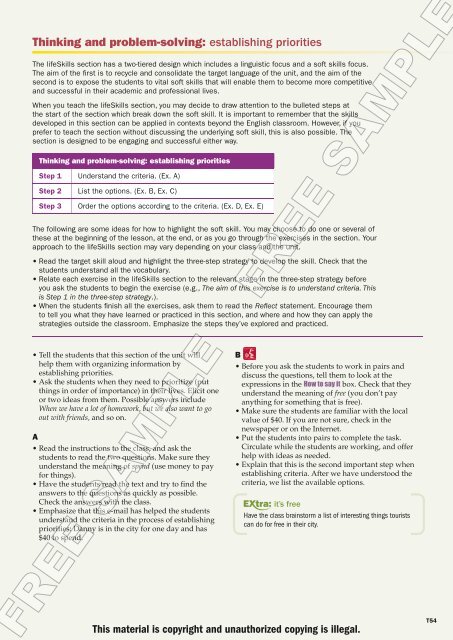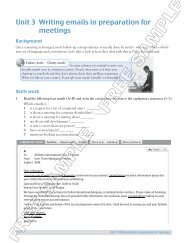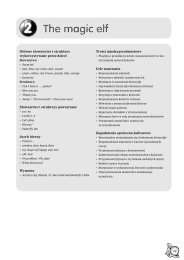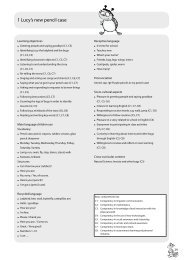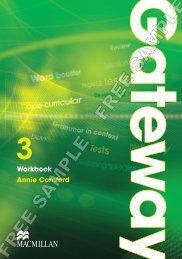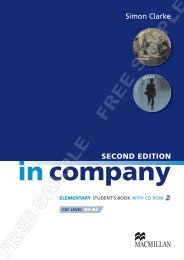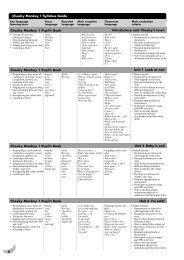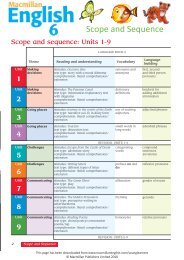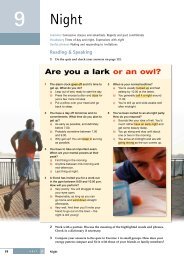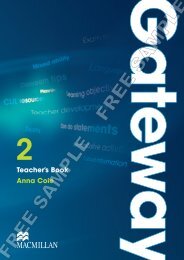there are - Macmillan
there are - Macmillan
there are - Macmillan
Create successful ePaper yourself
Turn your PDF publications into a flip-book with our unique Google optimized e-Paper software.
Thinking and problem-solving: establishing prioritiesThe lifeSkills section has a two-tiered design which includes a linguistic focus and a soft skills focus.The aim of the first is to recycle and consolidate the target language of the unit, and the aim of thesecond is to expose the students to vital soft skills that will enable them to become more competitiveand successful in their academic and professional lives.When you teach the lifeSkills section, you may decide to draw attention to the bulleted steps atthe start of the section which break down the soft skill. It is important to remember that the skillsdeveloped in this section can be applied in contexts beyond the English classroom. However, if youprefer to teach the section without discussing the underlying soft skill, this is also possible. Thesection is designed to be engaging and successful either way.Thinking and problem-solving: establishing prioritiesStep 1 Understand the criteria. (Ex. A)Step 2 List the options. (Ex. B, Ex. C)Step 3 Order the options according to the criteria. (Ex. D, Ex. E)The following <strong>are</strong> some ideas for how to highlight the soft skill. You may choose to do one or several ofthese at the beginning of the lesson, at the end, or as you go through the exercises in the section. Yourapproach to the lifeSkills section may vary depending on your class and the unit.• Read the target skill aloud and highlight the three-step strategy to develop the skill. Check that thestudents understand all the vocabulary.• Relate each exercise in the lifeSkills section to the relevant stage in the three-step strategy beforeyou ask the students to begin the exercise (e.g., The aim of this exercise is to understand criteria. Thisis Step 1 in the three-step strategy.).• When the students finish all the exercises, ask them to read the Reflect statement. Encourage themto tell you what they have learned or practiced in this section, and where and how they can apply thestrategies outside the classroom. Emphasize the steps they’ve explored and practiced.• Tell the students that this section of the unit willhelp them with organizing information byestablishing priorities.• Ask the students when they need to prioritize (putthings in order of importance) in their lives. Elicit oneor two ideas from them. Possible answers includeWhen we have a lot of homework, but we also want to goout with friends, and so on.A• Read the instructions to the class, and ask thestudents to read the two questions. Make sure theyunderstand the meaning of spend (use money to payfor things).• Have the students read the text and try to find theanswers to the questions as quickly as possible.Check the answers with the class.• Emphasize that this e-mail has helped the studentsunderstand the criteria in the process of establishingpriorities: Danny is in the city for one day and has$40 to spend.B• Before you ask the students to work in pairs anddiscuss the questions, tell them to look at theexpressions in the How to say it box. Check that theyunderstand the meaning of free (you don’t payanything for something that is free).• Make sure the students <strong>are</strong> familiar with the localvalue of $40. If you <strong>are</strong> not sure, check in thenewspaper or on the Internet.• Put the students into pairs to complete the task.Circulate while the students <strong>are</strong> working, and offerhelp with ideas as needed.• Explain that this is the second important step whenestablishing criteria. After we have understood thecriteria, we list the available options.it’s freeHave the class brainstorm a list of interesting things touristscan do for free in their city.FREE SAMPLE FREE SAMPLEThis material is copyright and unauthorized copying is illegal.T54


